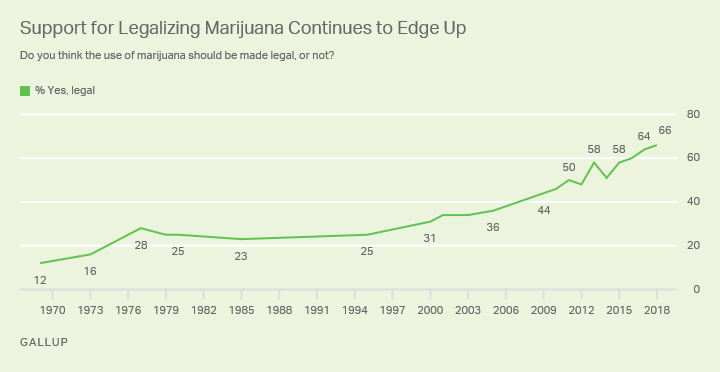US Drug Test Centers Blog
Painkiller Compliance Through Regular Drug Testing
Anyone who suffers from chronic pain will tell you how important it is to have a prescription of painkillers handy if they have a flare-up. Examples of chronic pain include lower back pain, bone pain, nerve pain, or muscle pain. Every patient is different, and the amount of prescription medication is based on a consensus that people will not abuse the pain medication when it is prescribed. The difference between acute pain and chronic pain has to do with time. Acute pain in medical terms is something that will not last more than six months. However, if left untreated, acute pain can turn to chronic pain.
The problem with prescription opioid painkillers is the fact that people who are not in need of pain medication will continue to seek prescriptions even without medical validation. Substance abuse is a serious problem worldwide and hospitals are full of people who are labeled "drug seekers." The few who seek painkillers, the substance abusers, are causing problems for the people who genuinely need prescription pain management for chronic problems. The evolution of the urinalysis has allowed the medical profession to weed out the few who are seeking painkillers for recreational use.
Drug testing through urinalysis has allowed employers, substance abuse programs, and the justice system to make educated decisions on a case by case bases when it comes to drug and alcohol abuse. Historically, urinalyses were designed to monitor people taking prescription medication. As other agencies outside the medical profession began utilizing the tool for drug testing the general public, the tool evolved into a pragmatic approach to weed out potential problems in the workforce, to monitor drug offenders, and to clear people of wrongdoing after accidents in the workplace. In the beginning, there was not the potential for the advancement in the toxicology reports from the samples.
Today, specimens are easily analyzed across a broad spectrum of drugs, are considerably more accurate, and can detect levels of substances that were not available before. Early on, there were higher rates of "false positives" (when samples appear "hot" for substances individuals allege they did not ingest) and "false negatives" (when samples should appear "hot" for substances individuals are admittedly ingesting). Today there is less potential for either problem and advancements in manufacturing allow for clear and consistent readings from samples.
 The medical industry is looking at using urinalysis more frequently with monitoring people for chronic pain. Since pain management in the hospital setting is so prevalent and many people who are drug seekers know how the system operates, there is significant substance abuse. Many pharmaceutical companies make a lot of money from painkillers because pain management is first and foremost whenever someone checks into the emergency room, recovers from illnesses and surgeries, and have chronic pain issues. That means most painkiller medication is priced low, approximately 95% less than an average antidepressant; cheap and easy to get means people are frequently pedaling and abusing painkillers. Often for chronic pain, doctor prescriptions allow for multiple refills over a period before people are required to have a reevaluation for another prescription.
The medical industry is looking at using urinalysis more frequently with monitoring people for chronic pain. Since pain management in the hospital setting is so prevalent and many people who are drug seekers know how the system operates, there is significant substance abuse. Many pharmaceutical companies make a lot of money from painkillers because pain management is first and foremost whenever someone checks into the emergency room, recovers from illnesses and surgeries, and have chronic pain issues. That means most painkiller medication is priced low, approximately 95% less than an average antidepressant; cheap and easy to get means people are frequently pedaling and abusing painkillers. Often for chronic pain, doctor prescriptions allow for multiple refills over a period before people are required to have a reevaluation for another prescription.
When doctors begin seeing average painkiller prescriptions, say a 30-day supply, used up in as little as 10-days, there is a consensus within the medical industry to look at a better way to monitor pain management. Looking at patients who have substance abuse problems is no small task. When someone has no history of abuse, genuinely had issues with chronic pain, and was not a professional drug seeker, there was no way to determine what was happening in pain management. Today, more and more doctors are tracking opioid painkiller prescriptions and asking patients to provide a urine sample at the office.
 Urinalysis is an excellent tool to display ongoing activity in the human body. While illicit drugs, prescription, and non-prescription medications dissipate in the bloodstream quickly, substances remain detectable in urine samples for days after ingesting products. Unfortunately, some people who abuse the system, as well as medication, are at fault for everyone else when it comes to painkiller compliance. Many people will receive their prescription medication, take what they need and sell the rest of the medication. There is still an issue regarding levels of medication in urine samples.
Urinalysis is an excellent tool to display ongoing activity in the human body. While illicit drugs, prescription, and non-prescription medications dissipate in the bloodstream quickly, substances remain detectable in urine samples for days after ingesting products. Unfortunately, some people who abuse the system, as well as medication, are at fault for everyone else when it comes to painkiller compliance. Many people will receive their prescription medication, take what they need and sell the rest of the medication. There is still an issue regarding levels of medication in urine samples.
While the specimen can provide a yes or no answer to whether or not the medication is in the body, the sample cannot give a level of the ingested medication. Monitoring pain management is ongoing and is constantly reevaluated. However, the medical profession is seeing a trend in how people are abusing painkillers. Doctors evaluate everyone differently, and every urinalysis gives clues to what people are doing to control chronic pain. Some people are looking to illicit drugs or non-prescription medication as well as prescribed painkillers to get through their days.
If samples show other substances that should not be in the system, doctors will look for alternative solutions. If there are illicit drugs most people who are abusing the system will no longer receive prescriptions and are recorded within the medical industry as drug seekers. Overmedicating for pain is a real concern as well. People who overmedicate rarely consider the ramifications. The damage to the liver and kidneys can sometimes be catastrophic and irreversible.
 Sometimes chronic pain can lead to chronic substance abuse. The pain may eventually subside, and the patient will continue to take the opioid painkillers because their bodies become dependent on painkillers. Utilizing drug testing as an adjunctive tool helps doctors understand what patients are doing with their prescriptions. The medical professionals are not looking to stop pain management; they want to curb the abuse. The urinalysis allows patients who have chronic pain to remain in compliance with pain management. Since implementing this tool, doctors see a decline in chronic pain issues.
Sometimes chronic pain can lead to chronic substance abuse. The pain may eventually subside, and the patient will continue to take the opioid painkillers because their bodies become dependent on painkillers. Utilizing drug testing as an adjunctive tool helps doctors understand what patients are doing with their prescriptions. The medical professionals are not looking to stop pain management; they want to curb the abuse. The urinalysis allows patients who have chronic pain to remain in compliance with pain management. Since implementing this tool, doctors see a decline in chronic pain issues.
Fewer people are looking to get ongoing prescription medication and fewer problems with drug seekers. The drug tests are revealing other details in patient lives they may not want doctors to know about including illicit drug use or marijuana use. The urinalysis is meant to help those that really need opioid painkillers for chronic pain.























